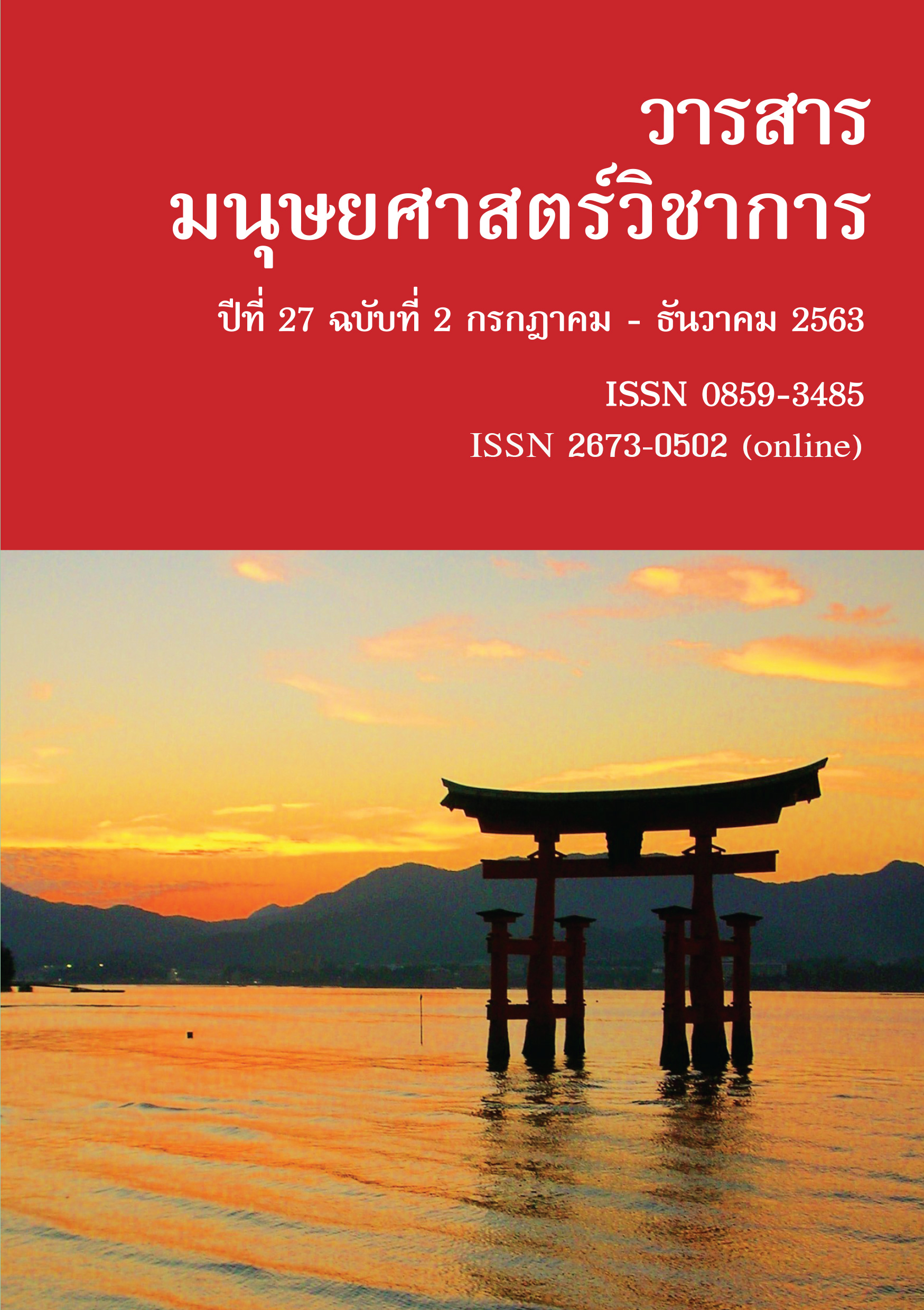Scripts and Orthography Used to Record Khmer Language in the Manuscripts in the Mid to Late 19th Century
Main Article Content
Abstract
Manuscripts used in official communication between Thailand and Cambodia during the 1782-1884 period have been preserved and are available in the manuscript and inscription section of the National Library of Thailand. Some of these were written in the Khmer language, and a portion of these, numbering some 40 manuscripts, were written in the 1843-1868 pe riod in orthographic symbols and an orthography pecular to that time. This article presents the results of a paleographic study of the forms of the orthographic symbols and orthography for recording the Khmer language in such manuscripts compared with the modern Khmer language. The findings revealed that there were four types of Khmer orthographic symbols: 1) consonants comprise 32 regular consonant symbols and 25 subscript consonant symbols, 2) vowels comprise nine independent vowel symbols and 26 dependent vowel symbols, 3) other marks comprise 10 diacritics and eight punctuation marks, and 4) 10 numerals. These orthographic symbols are written in the early Crieng style, which which developed in the post-Angkorian period and continues in the current Crieng scripts. The orthography and ascription of pronunciation in relation to the modern Khmer language in terms of both similarities and differences indicated that the consonants were classified into two series and
the diacritics were applied to indicate differences in pronunciation. In addition, some elements of this Khmer orthography appear to be related to the Thai orthography used at the same time.
Article Details
References
กรรณิการ์ วิมลเกษม. (2552). ตำราเรียนอักษรไทยโบราณ. กรุงเทพฯ: ภาควิชาภาษาตะวันออก คณะโบราณคดี มหาวิทยาลัยศิลปากร.
ก่องแก้ว วีระประจักษ์. (2537). หนังสือประทับตรา. ใน วินัย พงศ์ศรีเพียร (บรรณาธิการ), ความยอกย้อนของอดีต: พิพิธนิพนธ์เชิดชูเกียรติ พลตรี หม่อมราชวงศ์ศุภวัฒย์ เกษมศรี (น. 149-168). กรุงเทพฯ: ม.ป.ท.
ทองสืบ ศุภะมาร์ค. (2526). ประวัติอักษรไทย. กรุงเทพฯ: วัฒนาพานิช. ประกาศการพระราชพิธี เล่ม 2. (2549). กรุงเทพฯ: กรมศิลปากร. ประชุมพงศาวดารฉบับกาญจนาภิเษก เล่ม 12. (2542). กรุงเทพฯ: กรมศิลปากร.
ศานติ ภักดีคำ. (2549). พจนานุกรมคำยืมภาษาเขมรในภาษาไทย. กรุงเทพฯ: อมรินทร์พริ้นติ้งแอนด์พับลิชชิ่ง.
ศานติ ภักดีคำ. (2557). ทำเนียบบรรดาศักดิ์หัวเมืองภาคตะวันออกและหัวเมืองเขมรสมัยต้นกรุงรัตนโกสินทร์. ใน ยุทธมรรคา เส้นทางเดินทัพไทย-เขมร (น. 233-253). กรุงเทพฯ: มติชน.
สุนทรี พิรุณสาร. (2524). อักษรขอมสมัยพระนคร (วิทยานิพนธ์ปริญญาศิลปศาสตรมหาบัณฑิต สาขาวิชาจารึกภาษาไทย). มหาวิทยาลัยศิลปากร, กรุงเทพฯ.
อิงอร สุพันธุ์วณิช. (2527). วิวัฒนาการอักษรและอักขรวิธีไทย. กรุงเทพฯ: โรงพิมพ์จุฬาลงกรณ์มหาวิทยาลัย.
อุไรศรี วรศะริน. (2542). จารึกนครวัดสมัยหลังพระนคร ค.ศ. 1566 - ค.ศ.1747. กรุงเทพฯ: จงเจริญการพิมพ์.
อุไรศรี วรศะริน. (2545). การถ่ายถอดอักษรเป็นอักษรโรมัน-การถ่ายถอดเสียง. ในประชุมอรรถบทเขมร รวมบทความวิชาการของศาสตราจารย์เกียรติคุณ
ดร.อุไรศรี วรศะริน. (น. 242-253). กรุงเทพฯ: อมรินทร์พริ้นติ้งแอนด์พับลิชชิ่ง.
Huffman, F. E. (1970). Cambodian System of Writing and Beginning Reader. New York: Cornell University.
Jacob, J.M. (1960). The structure of the word in Old Khmer. BSOAS, XXIII, 351-368.
Khin Sok. (1985). Quelques Documents Khmers Relatifs aux Relations entre le Cambodge et l’Annam en 1843. BEFEO, 74(1), 403-421.


